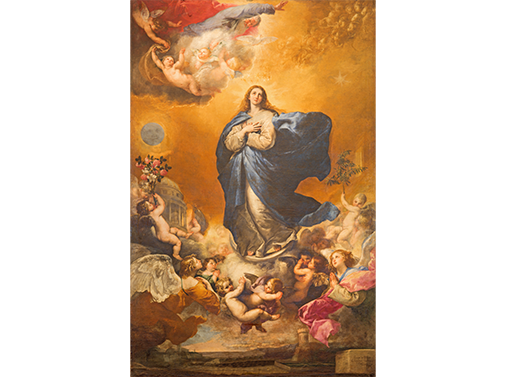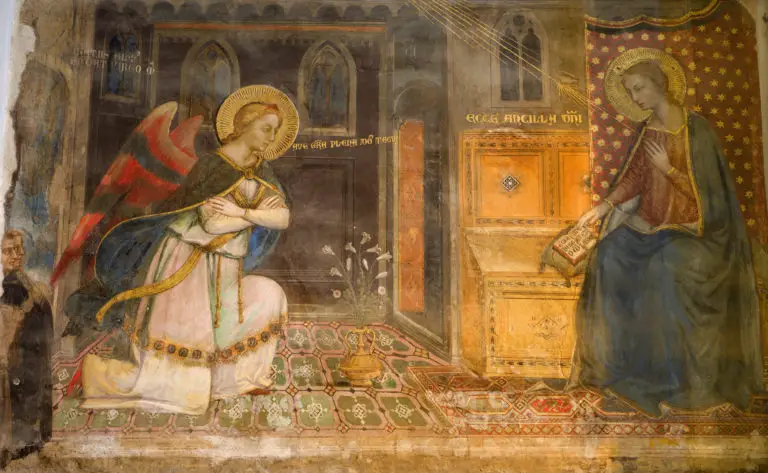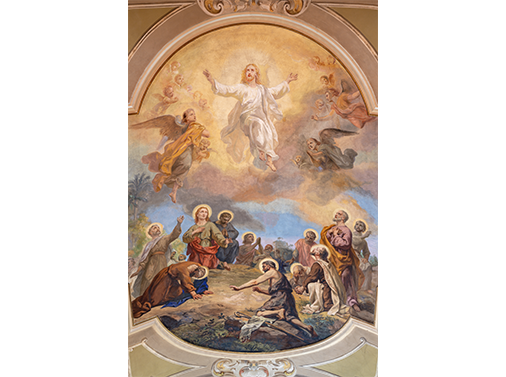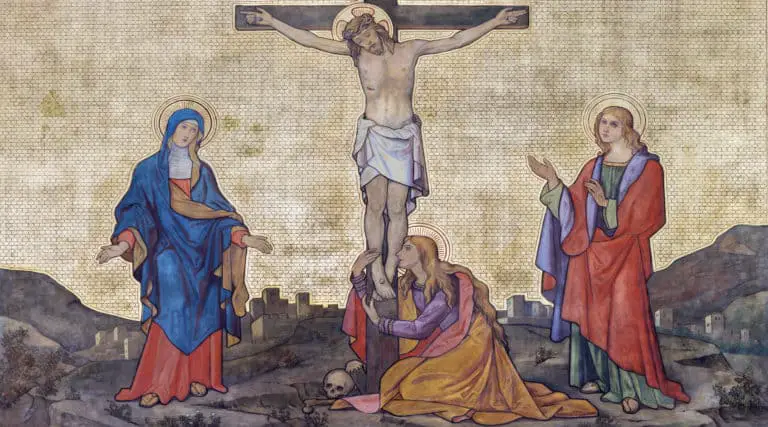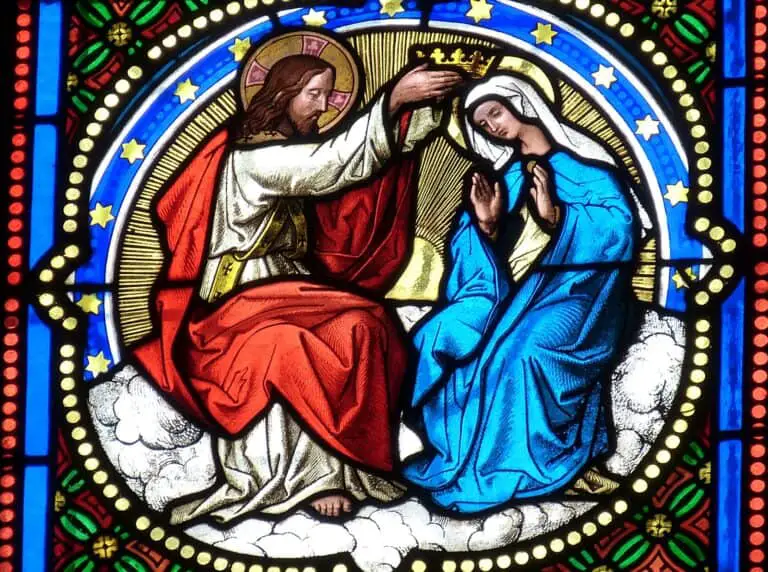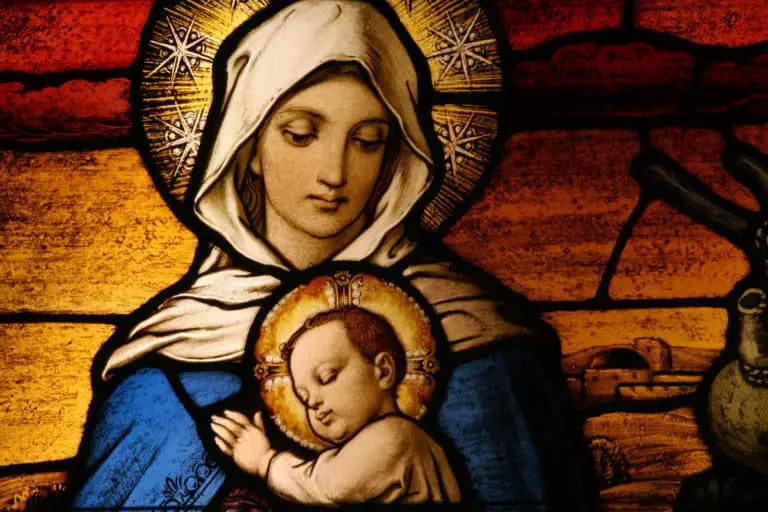What is the Assumption of Mary? Is it Biblical?
The Assumption of Mary, as declared by Pope Pius XII on 1 November, 1950, states that at the end of Marys earthly life, She was taken body and soul into Heaven.
The Dogma of the Assumption of Mary was declared in 1950. The Church has through tradition and as early as the 5th Century. The Discourse of John the Divine and in the Eastern Church from the late 6th Century of the Dormition (falling asleep) of Mary. Whilst there is no clear Biblical reference of Mary’s Assumptions, there are parallel events.
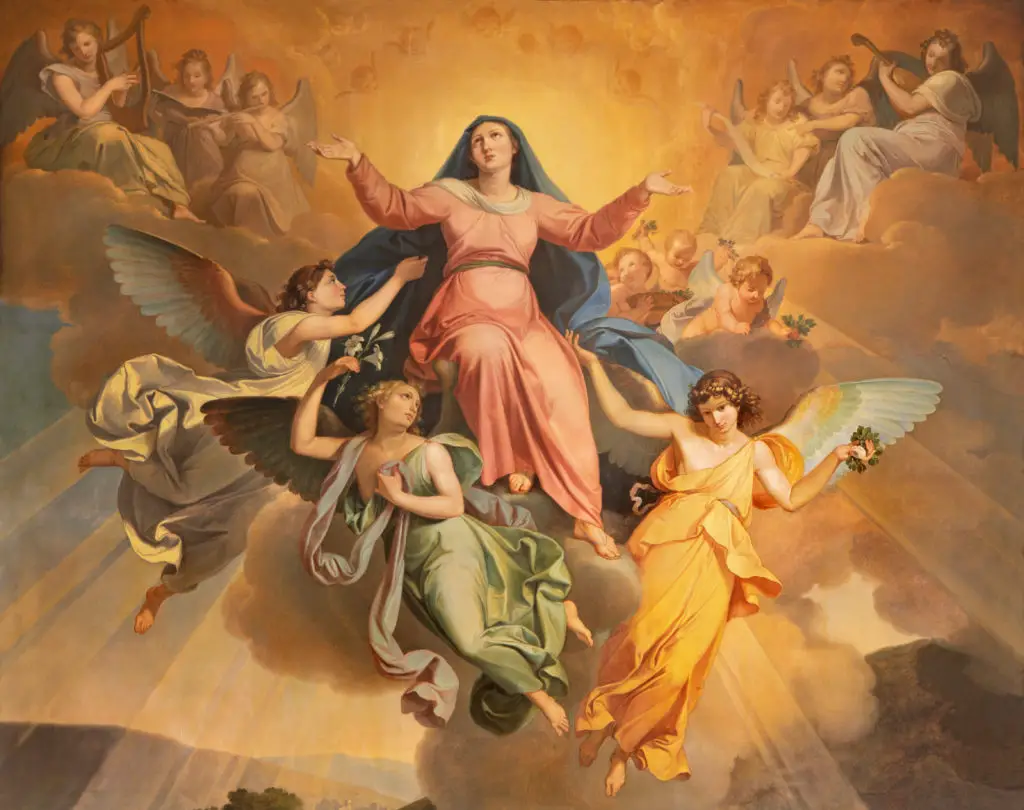
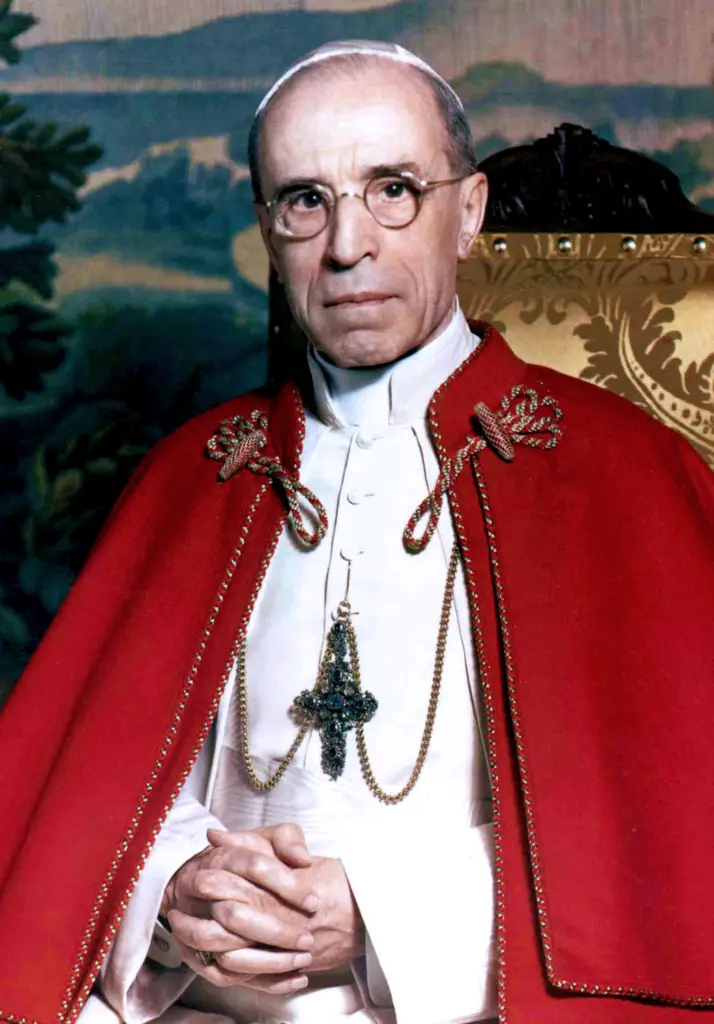
On November 1, 1950, Pope Pius XII defined through an Apostolic Constitution, titled Munificentissimus Deus, on Mary’s bodily Assumption into heaven:
Pope Pius XII stated:
“We proclaim and define it to be a dogma revealed by God that the immaculate Mother of God, Mary ever Virgin, when the course of her earthly life was finished, was taken up body and soul into the glory of heaven.”
This is a great honor that is bestowed on Mary. She is truly and without doubt:
-The Mother of the Son.
– Daughter of the Father.
– Souse of the Holy Spirit.
Mary is the fulfillment of the Triune God. For God created Her with special gifts, endowed her with blessings and sanctified Her with His Grace – She is Full of Grace and the fulfilment of the Woman as spoken about in Genesis 3:15. Since Mary is all these, why would God allow the His Mother, who denied Him nothing and is the humble servant of the Lord, who through Her ‘fiat’ (her ‘YES’) brought forth the Saviour and Redeemer, the Second Person of the Holy Trinity, the God made Man (Incarnate), allow Her body to be corrupted?
In addition, Mary journeyed with Her Son throughout His life – Jesus’ Birth; Presentation at the Temple; escape into Egypt; finding Jesus at the Temple after Jesus was missing; at the Wedding at Cana, at the Cross, His burial and His Resurrection and at the coming of the Holy Spirit.
Based on all the above, could you conclude that Mary underwent the same bodily corruption as we, poor sinners, undergo?
Wouldn’t it be a logical deduction to assume that Mary would merit the greatest reward?
Through the Sin of Adam of Eve, humanity was subject to suffering, death, and other consequences. The measure of the punishment is measured by whom the offence is committed against.
To Sin against God is to be subject to a great punishment, but this would take a great reversal, the promise of a redeemer and a woman who would not be subject to the stain of Sin. Therefore, we can and have every reason, to deduce that Mary would not be subject to the same conditions of all of humanity.
What does the Bible say about the Assumption of Mary?
The Bible, regarding Mary’s Assumption, says nothing explicitly, however there are instances of great servants of God who were taken into Heaven in the Old Testament and some reference to the dead walking the earth in the New Testament.
This truth on Mary’s Assumption is implicitly present, and it has become more and more explicit in the belief of Catholics as the centuries passed.
Mary’s corporal assumption is a necessary conclusion from her sinlessness, her fullness of grace, and the fact that she is the Mother of God.
Because Mary was conceived without sin, she was also free from the consequences of sin and from its punishments, which include death and bodily corruption.
That she did die (as commonly held by theologians) was not due to sin, but to her desire to be conformed to her Son in all things, even in death.
If I could recommend a wonderful book which is based on private revelation to Blessed Mary of Agreda titled, The Mystical City of God, written in the 17th Century, gives a glimpse into the life of Mary from Her infancy to Her Coronation in Heaven as Queen.
Here is a what Blessed Mary of Agreda witnessed as the moment arrived for Mary to depart from this world:
“During this quietness the incarnate Word descended from heaven on a throne of ineffable glory, accompanied by all the saints and innumerable angels, and the house of the Cenacle was filled with glory. The Most Blessed Mary adored the Lord and kissed his feet.
Prostrate before Him She made the last and most profound act faith and humility in her mortal life. On this occasion the most pure Creature, the Queen of the heavens, shrank within Herself and lowered Herself to the earth more profoundly than all men together ever have or ever will humiliate themselves for all their sins.
Her divine Son gave Her His blessing and in the presence of the courtiers of heaven spoke to Her these words:
“My dearest Mother, whom I have chosen for my dwelling-place, the hour is come in which thou art to pass from the life of this death and of the world into the glory of my Father and Mine, where thou shalt possess the throne prepared for thee at my right hand and enjoy it through all eternity. And since, by my power and as my Mother have caused thee to enter the world free and exempt from sin, therefore also death shall have no right or permission to touch thee at thy exit from this world. If thou wishest not to pass through it come with Me now to partake of my glory, which thou hast merited.”
The most prudent Mother prostrated Herself at the feet of her Son and with a joyous countenance answered:
“My Son and my Lord, I beseech Thee let thy mother and thy servant enter into eternal life by the common portal of natural death, like the other children of Adam. Thou, who art my true God, hast suffered death without being obliged to do so; it is proper that as I have followed Thee in life, so I follow Thee also in death.’’
Christ the Savior approved of the decision and the sacrifice of his most blessed Mother, and consented to its fulfillment. ….
When the angels began their music, the most blessed Mary reclined back upon her couch or bed. Her tunic was folded about her sacred body, her hands joined and her eyes fixed upon her divine Son, and She was entirely inflamed with the fire of divine love. And as the angels intoned those verses of the second of the Canticles:
“Surge, propera, amica mea,” that is to say: “Arise, haste, my beloved, my dove, my beautiful one, and come, the winter has passed,” etc.,
She pronounced those words of her Son on the Cross:
“Into thy hands, O Lord, I commend my spirit.” T
hen She closed her virginal eyes and expired.
… This glorious Transition of the great Queen took place in the hour in which her divine Son had died, at three o’clock on a Friday, the thirteenth day of August, she being seventy years of age, less the twenty-six days intervening between the thirteenth day of August, on which She died, and the eighth of September, the day of her birth ..” (The Mystical City of God, Book 8, Chapter VI).
Mary would then be Resurrected on the 15 August according to Blessed Mary of Agreda (The Mystical City of God, Book 8, Chapter VII).
It is through Mary’s humility that She would undergo the same death and burial as Her Son.
Mary remained on earth after our Lord’s Ascension and was given to John and to the Church as Mother (John 19:27), she remained with the apostles as long as the infant Church needed her guidance and motherly care.
A common passage which eludes to the Assumption of Mary is that of Revelation 12:1-6:
“And a great sign appeared in heaven, a woman clothed with the sun, with the moon under her feet, and on her head a crown of twelve stars; she was with child and she cried out in her pangs of birth, in anguish for delivery.
And another sign appeared in heaven; behold, a great red dragon, with seven heads and ten horns, and seven diadems upon his heads. His tail swept down a third of the stars of heaven and cast them to the earth.
And the dragon stood before the woman who was about to bear a child, that he might devour her child when she brought it forth; she brought forth a male child, one who is to rule all the nations with a rod of iron, but her child was caught up to God and to his throne, and the woman fled into the wilderness, where she has a place prepared by God, in which to be nourished for one thousand two hundred and sixty days.”
Since God, The Holy Trinity ascended righteous men into Heaven, God can do the same to His chosen servant – Mother, Daughter and Spouse.
We can read these events in the following passages:
“And Henoch walked with God: and lived after he begot Mathusala, three hundred years, and begot sons and daughters.
And all the days of Henoch were three hundred and sixty-five years.
And he walked with God, and was seen no more: because God took him” (Genesis 5:22-24)
“….. And as they still went on and talked, behold, a chariot of fire and horses of fire separated the two of them. And Elijah went up by a whirlwind into heaven. And Elisha saw it and he cried, “My father, my father! the chariots of Israel and its horsemen!” And he saw him no more. …” (2Kings 11-12).
Jesus Himself Ascended into heaven, (St Mark 16:19; St Luke 24:50–53; Acts 1:9–11)
At the Death on the Cross of Jesus it is testified by the Evangelist Matthew that the dead were raised: (St Matthew 27:50-53)
“And behold, the curtain of the temple was torn in two, from top to bottom; and the earth shook, and the rocks were split; the tombs also were opened, and many bodies of the saints who had fallen asleep were raised, and coming out of the tombs after his resurrection they went into the holy city and appeared to many (St Matthew 27:50-53).
Has the Church always held this view on Mary’s Assumption into Heaven?
By the end of the sixth century, the faithful in the East celebrated the feast of the Dormition (or Assumption) of Our Lady, but because it was kept on different dates in different places, it was Emperor Maurice (+ 602) who stipulated that it be everywhere kept on August 15.
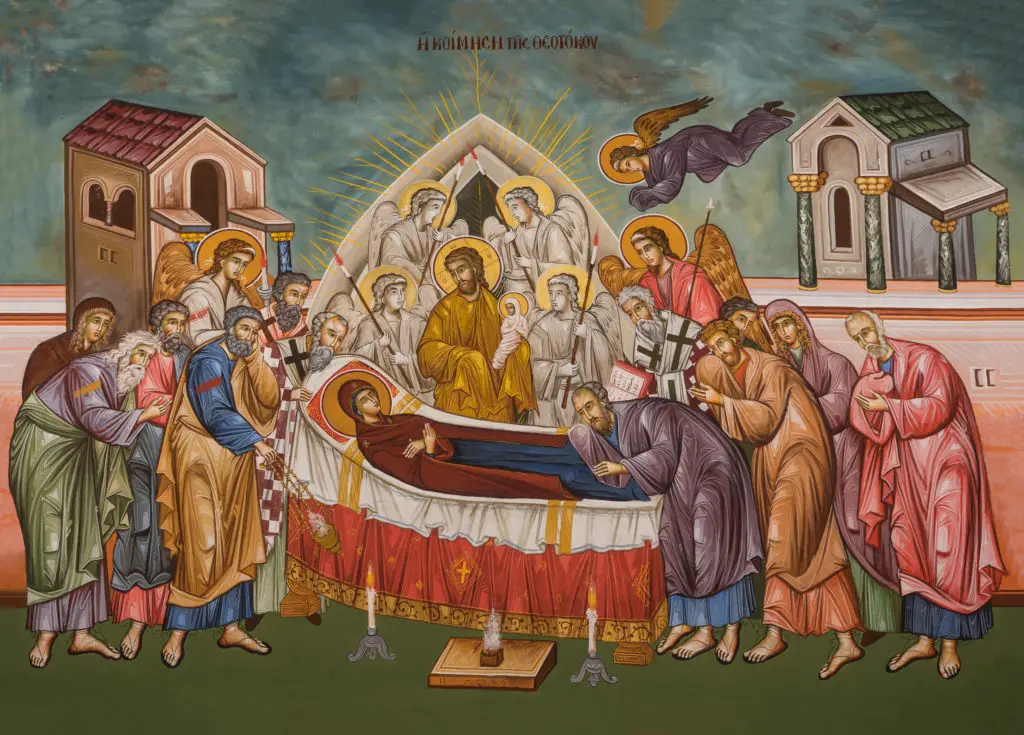
By the seventh century, the feast was commonly celebrated in Rome and in the West.
With the passage of time, the belief in Mary’s corporal assumption into heaven became universally held by the Catholic faithful, and in 1950 the pope and the hierarchy of the Roman Church thought the time suitable for its solemn definition.
In summary, since God provides this exemption to some like Enoch, Elijah, the unnamed dead who were raised from the dead in St Matthew’s Gospel, then surely the same and more would apply to the Mother of Jesus, the Mother of God?
Yes, implicitly, Mary was Assumed into heaven both body and soul, and if she had died, this would have been Her choice out of humility, but it is for certain that Mary is both Body and Soul in Heaven.
What an honour given to a Woman chosen and given great reward for a YES to God… “I am the handmaid of the Lord, be it done unto me according to thy word”.
